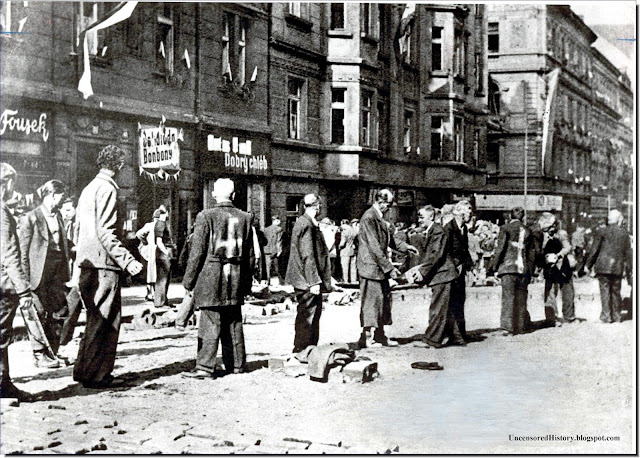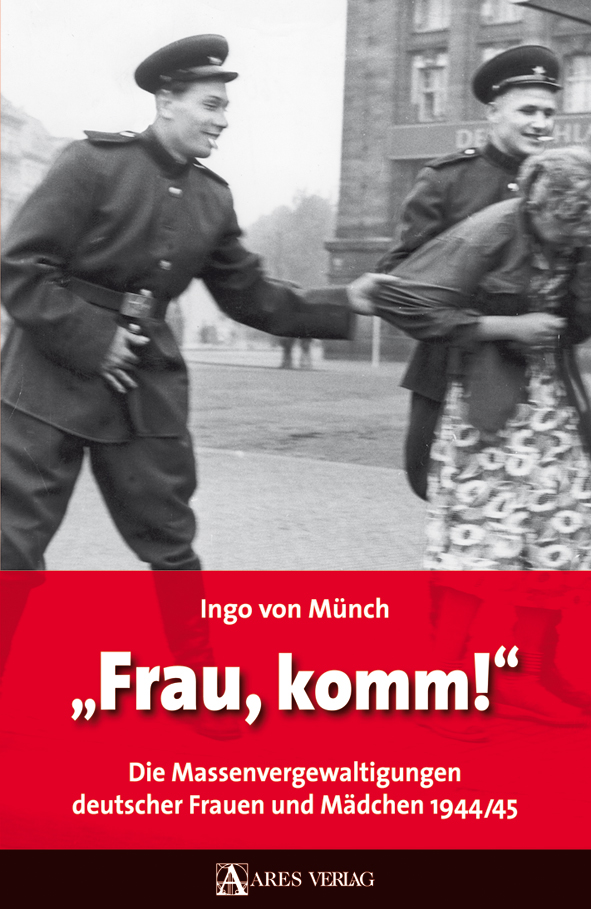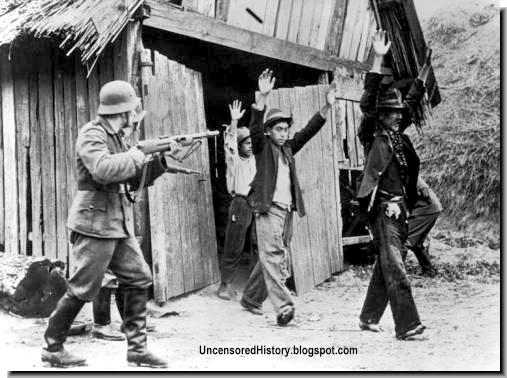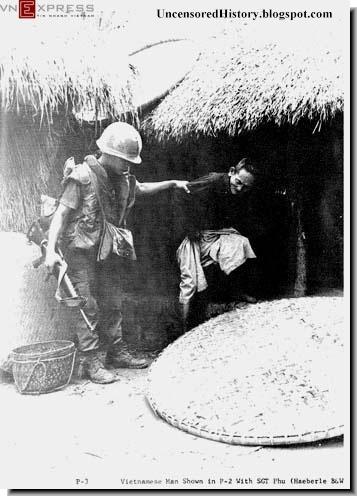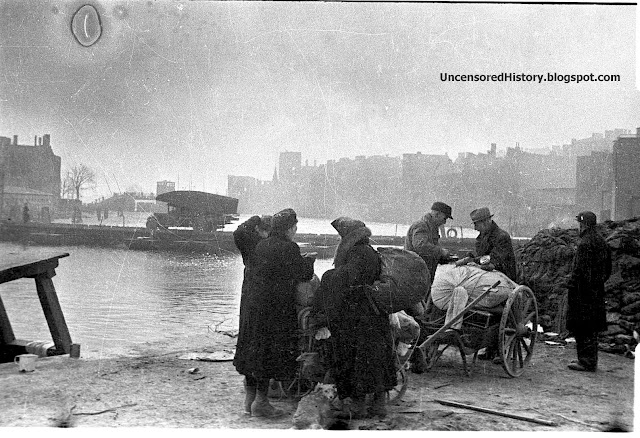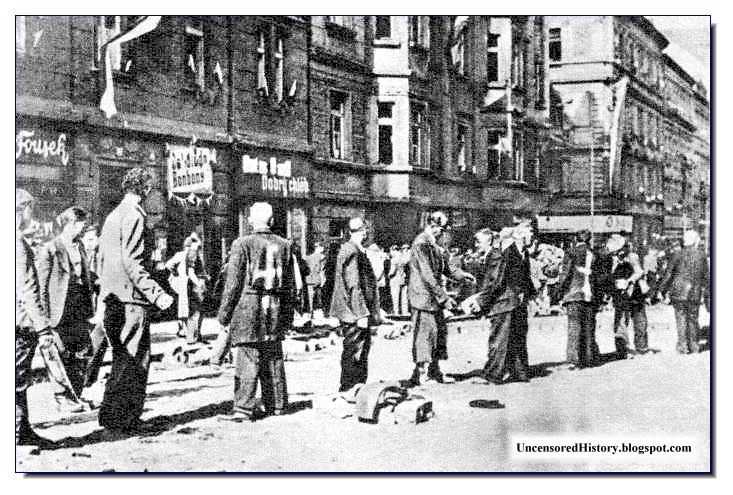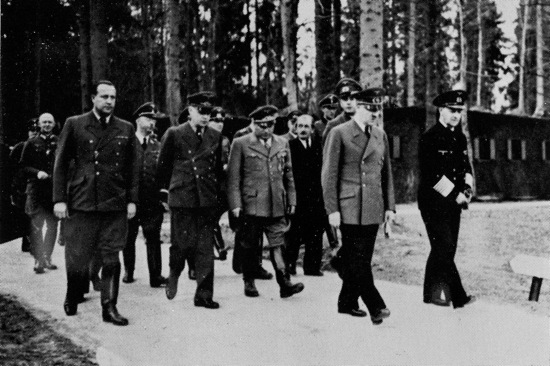The second country after Poland where the "Germans question" was dealt with was Czechoslovakia. In pre-war Czechoslovakia, Germans made up a quarter of the population. They were mostly concentrated in the Sudetenland - there were 3 million Germans, representing 93% of the population. A large proportion of the Germans were also present in Moravia (800 thousand people, or a quarter of the population). There was also a large German community in Bratislava.
After the capitulation of the German Reich Germans of the Czech Sudetenland met the wrath of the Czechs.The Germans were forced to leave their homes and leave their property. To identify their nationality they were required to wear clothing to wear "N" ("Nemec" = "German") on their clothes.
Not infrequently, the displaced were brutally killed. The worst massacres occurred in Usti nad Labem, where 2700 German were killed within a few hours.
Altogether, about 2.9 million Germans expelled from Czechoslovakia. Edvard Beneš who had returned from exile legitimized the expulsion by Law No 115 of 8 May 1946.
It said that these otherwise criminal acts were exempt from punishment if they contributed to the freedom of Czechoslovakia, or if they were committed to retaliate against the occupiers.
This and other acts of expropriation and expulsion of Germans came to be known as the Beneš decrees in history.
In Postelberge (today Postoloprty) for five days - from 3 to 7 June 1945 - Czechs tortured and killed 760 Germans aged 15 to 60 years, one-fifth of the German population of the city
Nobody could really say why the five boys had joined the fatigue party of men on that fateful summer's day in 1945. Some thought they were hungry, others that they were trying to flee the wrath of the Czechoslovakian army.
Hundreds of Germans had been herded together on the parade ground in the Czech town of Postoloprty (known in German as Postelberg) on June 6, 1945, just a month after the end of World War II in Europe. They could clearly see the fatigue party heading off. The five boys who had hidden among the men were discovered and led back.
"Mr Marek wanted the boys to be flogged," recalls 81-year-old Peter Klepsch, an eye-witness. "But Captain Cerny, the commander of the Czech troops, said the boys should be shot."
The boys' names were Horst, Eduard, Hans, Walter, and Heinz. The oldest was 15, the youngest 12. They were flogged and then shot dead -- in full view of the others, who were held back at gunpoint. The Czechs didn't use machine guns, but their rifles, so it took a long time to kill all five. "One of the boys who hadn't been mortally wounded by the gunfire ran up to the marksmen begging to be allowed to go to his mother," recalls 80-year-old Heinrich Giebitz. "They just carried on shooting."
It all began in the weeks and months after the end of the war. It was the time of the so-called "wild expulsions," when ethnic Germans were being hunted down in various parts of Czechoslovakia. The fascists had been beaten. Now the Czechs wanted to rid themselves of their despised countrymen as quickly as possible. Though most of the Nazi perpetrators had long-since fled, the rage and the lust for revenge knew no bounds.
Ethnic Germans had lived on the Czech side of the border for centuries, so when Hitler annexed the area in 1938, they had lined the streets to cheer the soldiers. The rest of Bohemia and Moravia was soon a brutal Nazi protectorate, and in the years that followed more than 300,000 Czechs died at the hands of their German overlords. Theresienstadt concentration camp and the village of Lidice, which was burnt down by the SS, will forever serve as symbols of Nazi barbarism.
At the Potsdam conference in August 1945, the Allies authorized the expulsion of more than 3 million ethnic Germans from Czechoslovakia, albeit on the proviso that "any transfers that take place should be effected in an orderly and humane manner." But by that time people had already taken matters into their own hands in many areas.
--------------------------
One of the most heinous crimes occurred on the night of 18th to June 19th at Prerau (today Přerov). Czech soldiers returning from Prague after the celebrations at the end of the war, met with a train carrying German civilians, which at the end of the war were to be evacuated to Bohemia and were now being deported to the Soviet occupation zone. The Germans were ordered off the train and made to dig a mass grave. The grave was ready by midnight. After that Czech soldiers under the command of an officer called Karol Pazura shot 265 Germans, which included 120 women and 74 children. The oldest of those killed were civilians 80 years old, and the youngest - eight months. When the shooting ended, the Czechs looted the belongings of the refugees.
http://carpathiangerman.com/benesch.htm
http://expelledgermans.org/sudetengermans.htm
---------------------------
As early as October 1943, Edvard Benes, who would become the president of Czechoslovakia after the war, had threatened from exile in London that "what the Germans have done in our lands since 1938 will be revenged on them multifold and mercilessly." And speaking during a radio broadcast in November 1944, Sergej Ingr, the commander-in-chief of Czech forces in England, issued his fellow countrymen with the following order: "Beat them, kill them, let nobody survive."
Demands such as these were eagerly received in places like Postoloprty and Zatec. When the Soviet army pulled out of the newly-liberated area, soldiers of the 1st Czechoslovakian Corps moved in and immediately set about "concentrating" the region's ethnic German population.
 |
| Germans killed in Prague. May 1945 |
"On Monday evening we were all forced to run around the square and sing Nazi songs or whatever passed as such," Peter Klepsch recalls. "All those who didn't run or sing right were flogged."
The next night he saw a group of men being led off for execution. It wasn't to be the last. He also repeatedly heard volleys of gunfire during the day.
Klepsch, who had opposed the Nazis and finished the war in prison for trying to help three Frenchman flee, was eventually permitted to leave the scene of the atrocity on the fifth day. An unknown number of men remained behind. Most were methodically and systematically shot dead, many near the barracks, others by the local school.
The largest mass grave, containing almost 500 bodies, was later discovered in the Pheasant Garden, a former pheasant farm out of town.
"Two hundred and fifty men were taken one day, another 250 the next, and a layer of earth was thrown in between," a policeman told a parliamentary inquiry in 1947. "They weren't all executed in a single night, but rather in stages." Often enough the condemned men were given a pick and shovel, and made to dig their own graves.
The perpetrators didn't have many scruples. After all, they were sure they had high-level military backing. Jan Cupka, the head of the defense intelligence service, remembers General Spaniel, the commander of the 1st Czechoslovakian Division, recommending they "clean" the region of its ethnic Germans. "The general told us, 'The fewer of them that remain, the fewer enemies we'll have.'"
http://www.spiegel.de/international/europe/revenge-on-ethnic-germans-czech-town-divided-over-how-to-commemorate-1945-massacre-a-646757.html
The director of the documentary, David Vondráček, says this unique footage is evidence of the violent post-war days when Czechs, frustrated by six years of Nazi occupation, often took out their anger on anyone they could lay their hands on.
“Around 40 Germans were picked up, regardless of their individual guilt, from the residential areas of Prague – Bubeneč, Ořechovka, and others, and were interned in a cinema at Bořislavka. Prague’s cinemas were converted into internment camps for Germans whose houses and apartments were meanwhile being pillaged. Then they were taken out of the cinema and killed by Czech ‘revolutionary guards’, with participation by some Soviet soldiers.”
The footage was shot by an amateur film maker on May 9, the day the Soviet troops finally reached Prague. His family later kept the film scroll hidden for more than 50 years, as the authorities did not look favourably on anyone possessing evidence of such atrocities.
Other parts of the documentary ‘Killings Czech style’ focus on the murder of more than 1,000 Germans near the north Bohemian town of Žatec in June 1945, which the director says was the biggest post-war mass murder in Europe until the massacre of Srebrenica in 1995.
http://www.radio.cz/en/section/curraffrs/documentary-to-show-post-war-mass-murder-of-german-civilians-in-prague
A concentration camp inmate tells of the terrorism engaged in by the victorious Allies. (From Die Vertreibung Sudetenlands 1945/46, Bad Nauheim, 1967, p. 299.) Josef Eckert was one of those men whom the National Socialists had thrown into concentration camp Dachau and for whom liberation came on May 8, 1945. He came from Brüx, and after being released from the concentration camp he hurried home to his native city, which he had not seen for many years. Later he wrote one of his fellow-sufferers from Dachau:
"The Czechs came to our city as avengers driven by hatred. First all German signs had to be taken down. Then we had to turn in all bicycles, motorcycles, radio sets, typewriters and telephones, and harsh penalties were in store for anyone who did not obey this order. Then the Czechs proceeded to plunder our houses. They went systematically from house to house, from home to home and stole furniture and linen, clothing and jewelry, in a word, anything they liked. But the plundering was not the end of it. There were also murders. On one of these horrible days they arrested comrade Willi Seifert, from Bandau. He was accused of having hidden a roll of telephone wire. At the Czech command post in the inn 'Gebirgshöhe' they stood him up against a wall and murdered him from behind."
http://www.gnosticliberationfront.com/sudeten_german_inferno_the_hushe.htm
"On May 13, 1945 the Czech reign of terror began in Iglau. About 1,200 Germans committed suicide the following night. By Christmas there were some 2,000 dead. On May 24 and 25 partisans drove the German population out of their homes within twenty minutes and locked them into the camps Helenental and Altenburg. These camps were officially known as concentration camps. Both camps held about 6,700 people. There was not enough water, neither for drinking nor for other purposes. There were no toilet or washing facilities. For the first days there was also no food, and later only a thin watery soup and 3 1/2 ounces of bread daily. After the first eight days children were given a cup of milk. Each day several elderly people and children died. On June 8 the inmates of Helenental were robbed of even their last possessions, and the next day they were marched more than 20 miles via Teltsch to Stangern. On this death march the people were constantly urged to greater speed with whippings. 350 people lost their lives to exhaustion and hunger on this trek."
Franz Kaupil continues: "In Stangern 3,500 people were crammed into a camp with an intended capacity of 250. Most of them had to camp outdoors, despite the rain. The next day, families - men, women and children - were quartered separately. The food was unfit for human consumption. In the course of a shooting in the women's camp four women were killed, among them Frau Friedl and Frau Kerpes, and one woman was badly injured. Corporal punishment was the order of the day for men and women alike. There was even a separate cell for beatings.
"The camp administration rented the inmates out to the Czech farmers as workers."
Franz Kaupil recalls further that on June 10, 1945 16 inmates from Iglau were taken from their cells and shot in the Ranzenwald forest. "Among them was the old town priest Honsik, the gentlemen Howorka, Augustin, Biskons, Brunner, Laschka, Martel, Kästler, and others whom I did not know. As late as May 1945, Krautschneider, Kaliwoda, Müller and Ruffa were shot in the court hall without any trial at all. One Hoffmann was beaten to death. Rychetzky was the warder whom everyone feared most. Factory owner Krebs was scalped. Building contractor Lang died of the effects of horrible maltreatment. 70-year-old Colonel Zobel hung himself in the cell.
Excerpt from the book _Zwiespalt der Gemüter_ by Alexander Hoyer:
Reference
http://expelledgermans.org/sudetengermans.htm
Related
Germans Murdered In Czechoslovakia 1945: Brno Death March



